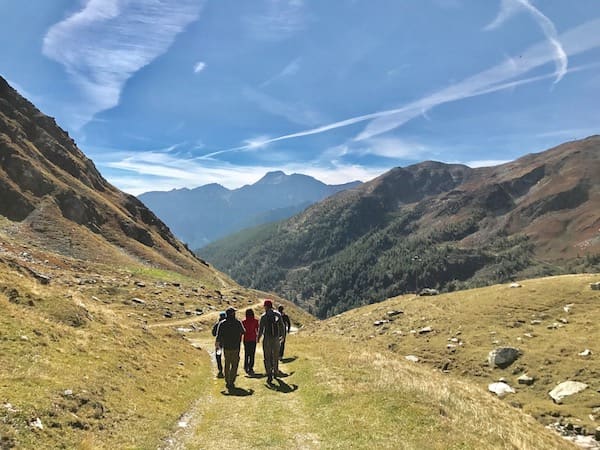
30 Apr How to choose boots for hiking in the Alps
How to choose boots for hiking in the Alps? This is a question that I get a lot and the answer is not straightforward.
To start with, you want to buy your boots in advance so you have time to break them in. Hiking in the Alps involves many hours on your feet and comfortable footwear goes a long way towards the enjoyment of your trip. Here are a few things you should consider before buying your hiking boots.
Know your feet
It’s helpful to know your foot type. Different shoe brands cater to different foot types. For instance we have found that Garmont makes shoes for a wide foot whereas Scarpa tends to cater to a thinner foot. We have had many good reports about Sportiva, Salomon, and Salewa. Be sure to discuss your foot type as well as your specific requirement for boots for hiking in the Alps with your salesperson, as he or she will be able to help you with this.
Know your terrain
Technology in shoes has come a long way. We now often see people in shoes that resemble running shoes when hiking in the Alps. These are ok for a terrain that is not too rocky, has no glaciers or snow, and does not have too many steep ascents or descents. Hiking in the Alps generally involves terrains featuring all of the above so you want to check this out first. By all means bring your running shoes as they are good to put on when you have some simple hikes too.
Consider good ankle support
You will need a boot that supports your ankles. Why? Firstly, to prevent snow from getting into your shoes, (walking with wet feet for hours should be avoided). Secondly, to support your ankles on uneven terrain. Thirdly, for compatibility with crampons, even if you need to use them only for a short section. The laces of the crampons tie tightly around your ankles and this is painful if you do not have boots with good ankle support.
Compulsory features in your trekking boots
Your boots should be waterproof, stable, supportive, and crampon-compatible. They should also have good traction, not be too heavy and have a good lacing system so that the laces do not come undone during your trek. This may sound trivial and not very technical, but we have learnt from one of our guides – who loves to give us a lesson on how to tie shoelaces – that a lot of time is wasted in constantly re-tying shoelaces.
For those of you who will be joining us on high altitude trekking in the Alps this season, I have provided more information and that you can check in our next blog What to know about hiking shoes for the Alps.
I hope this helps you decide on your boots for hiking in the Alps.
Warm regards from the mountains,
Danielle


